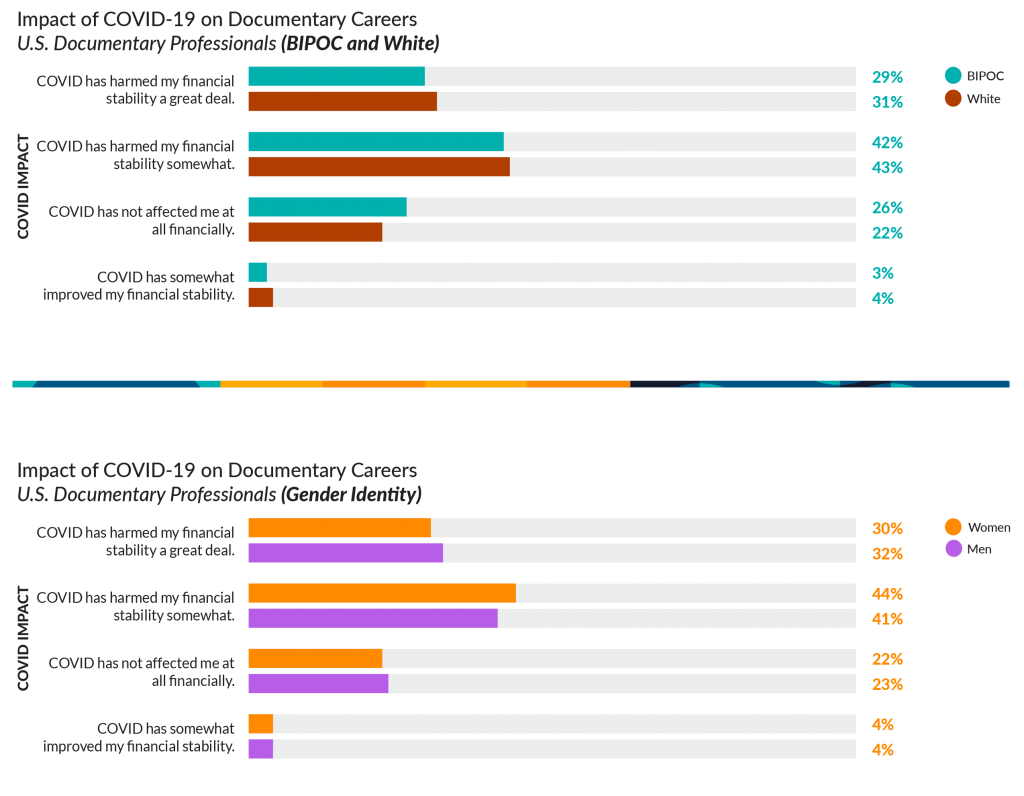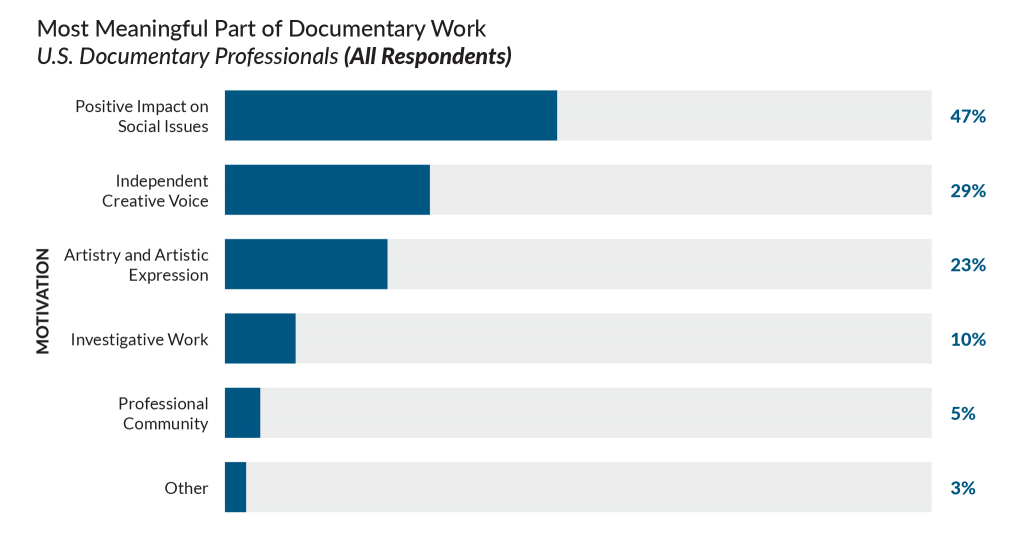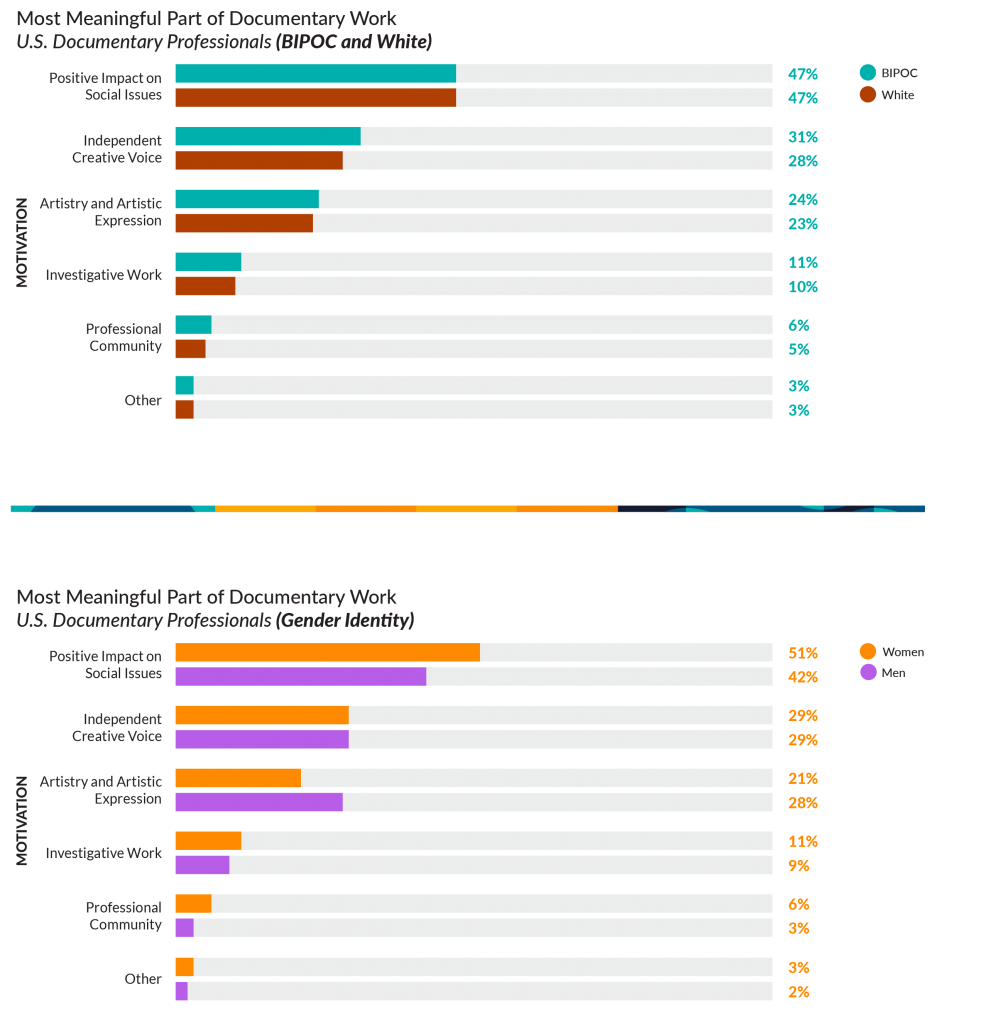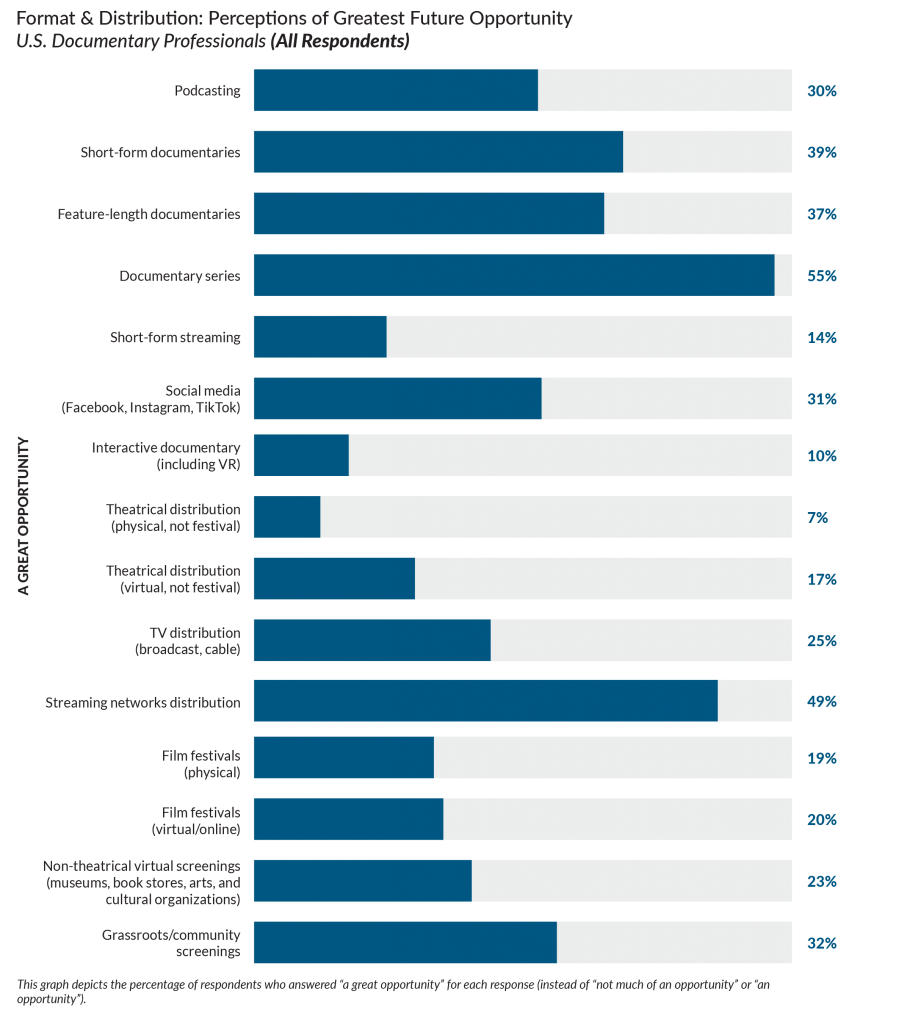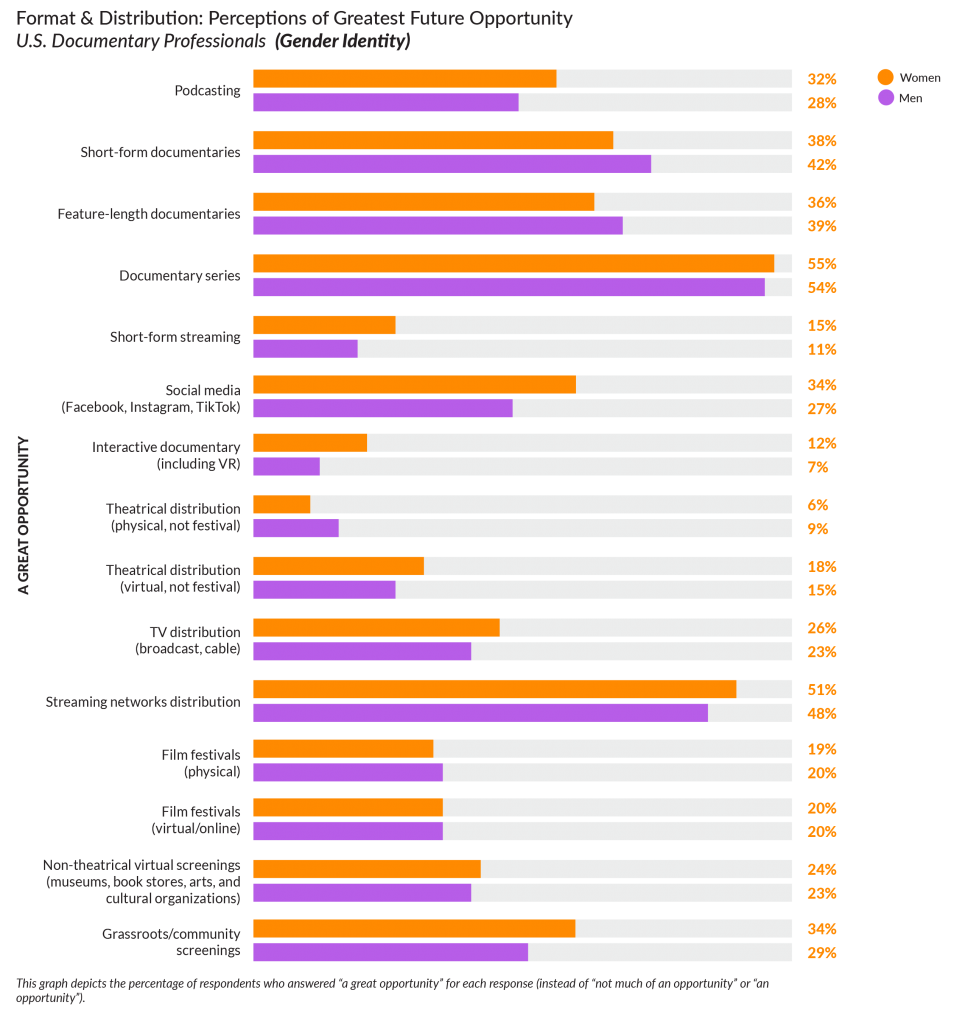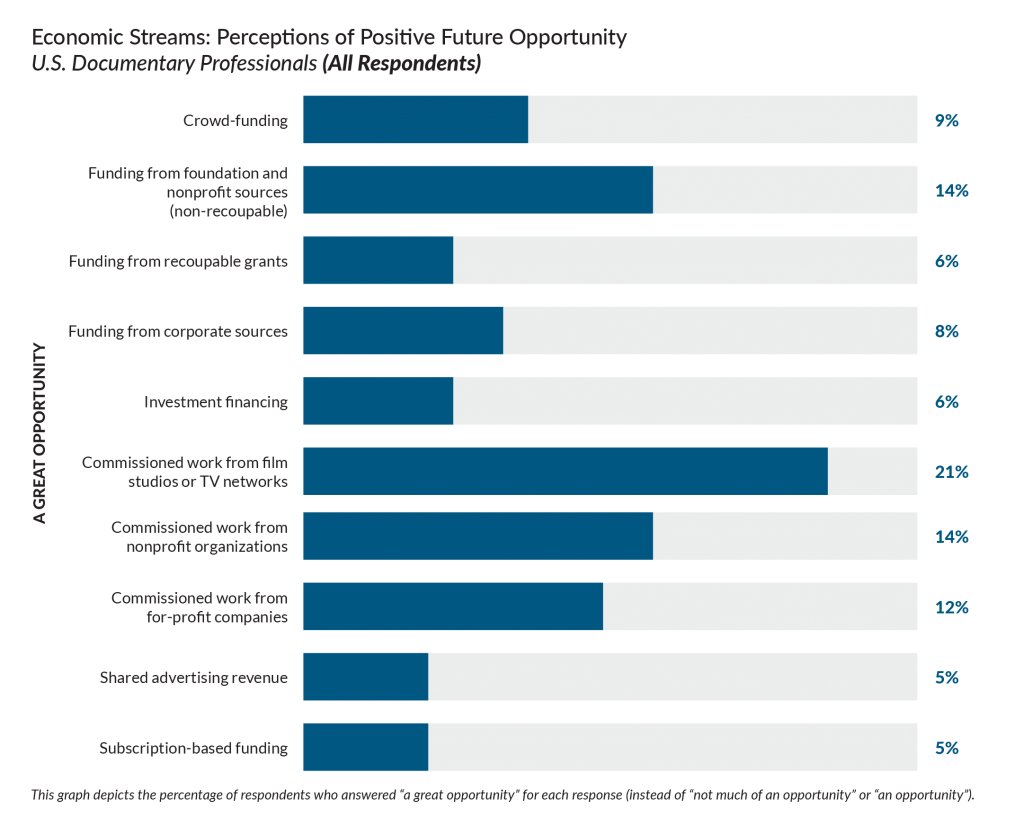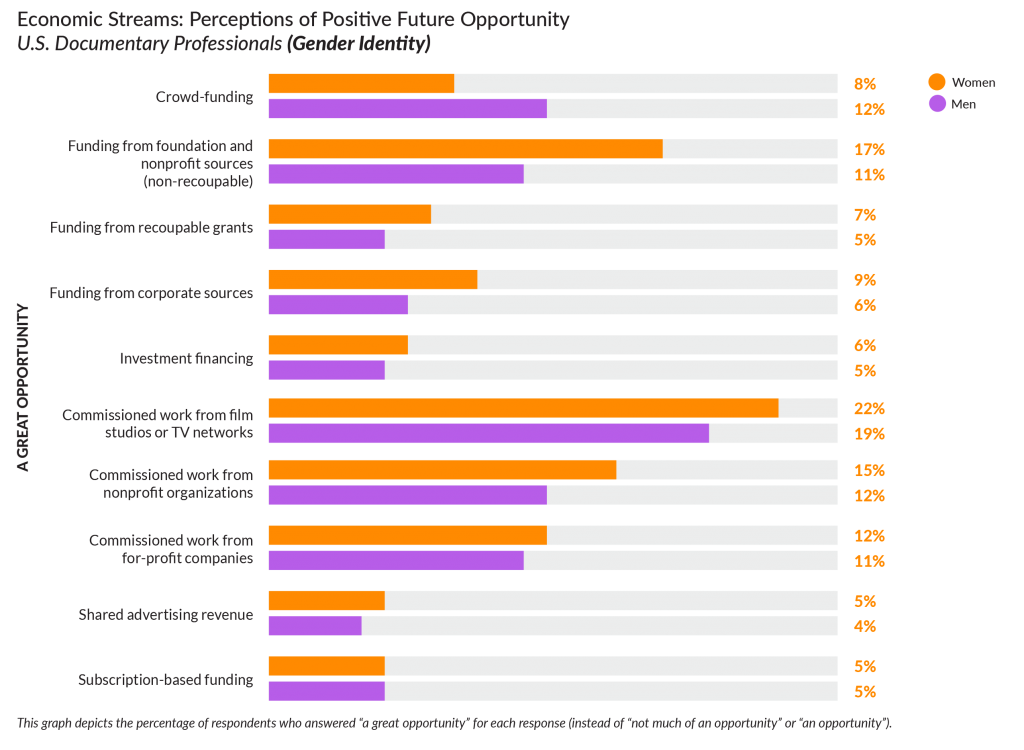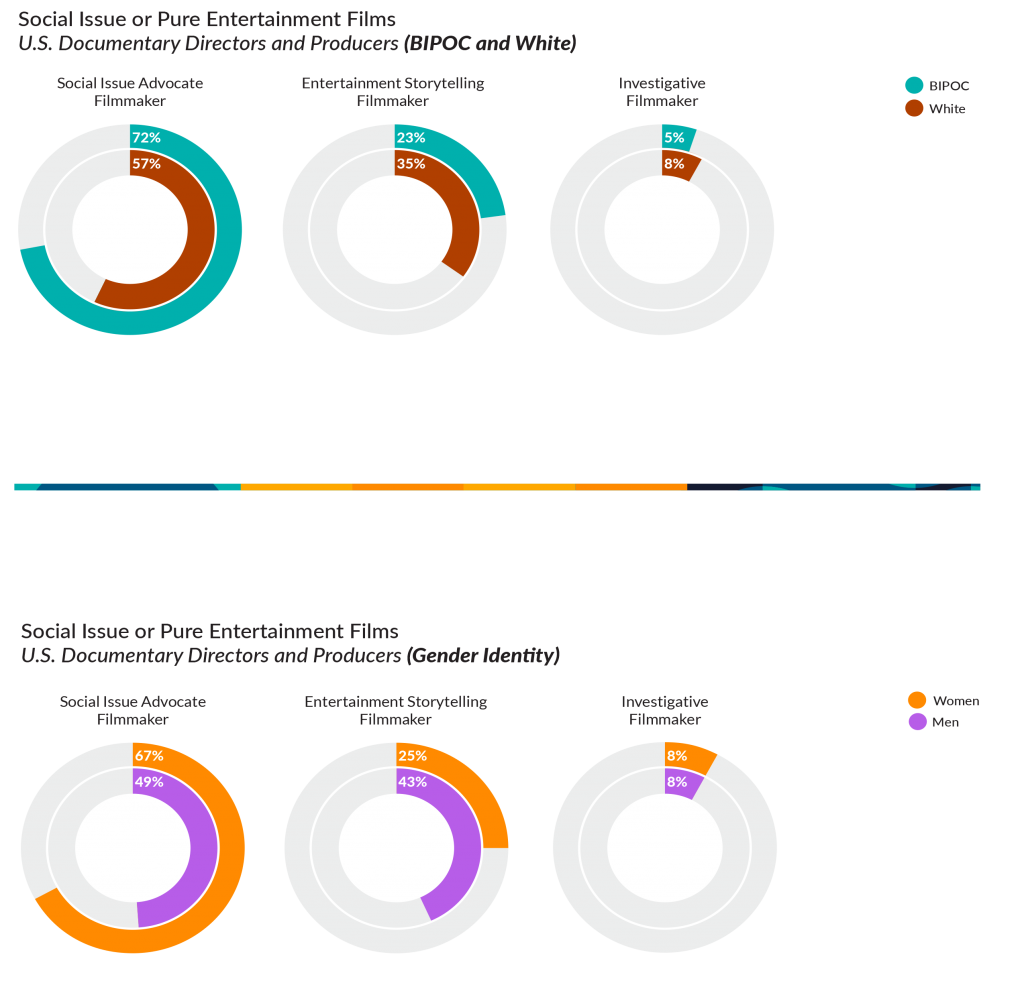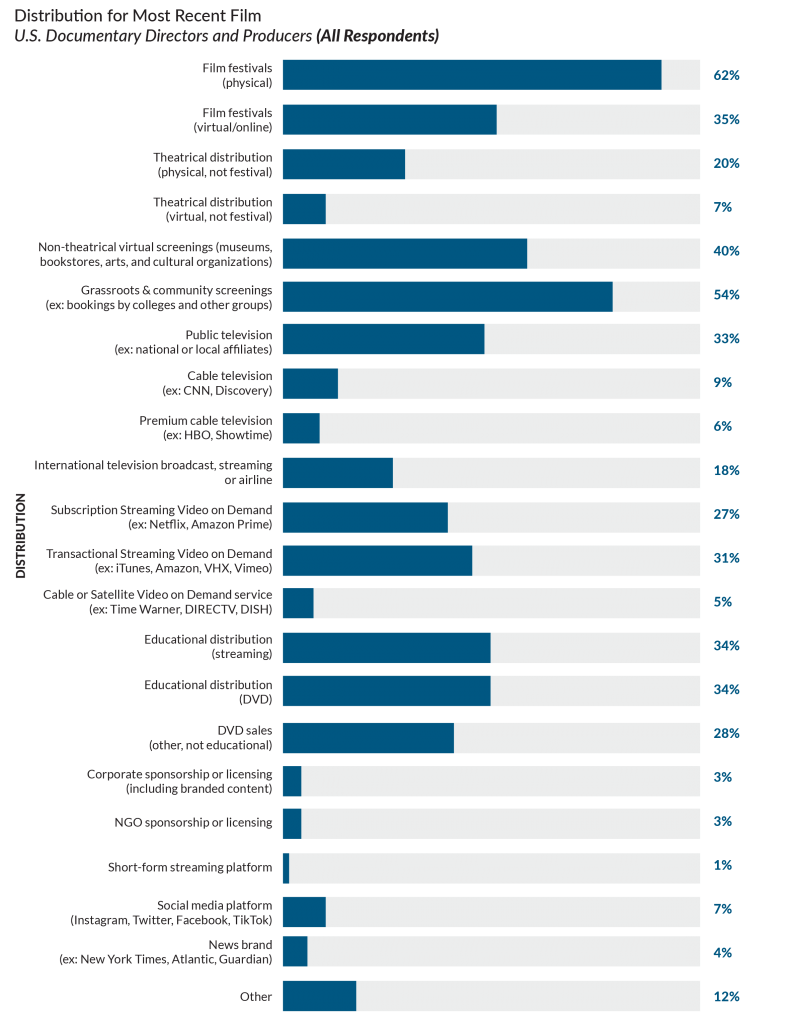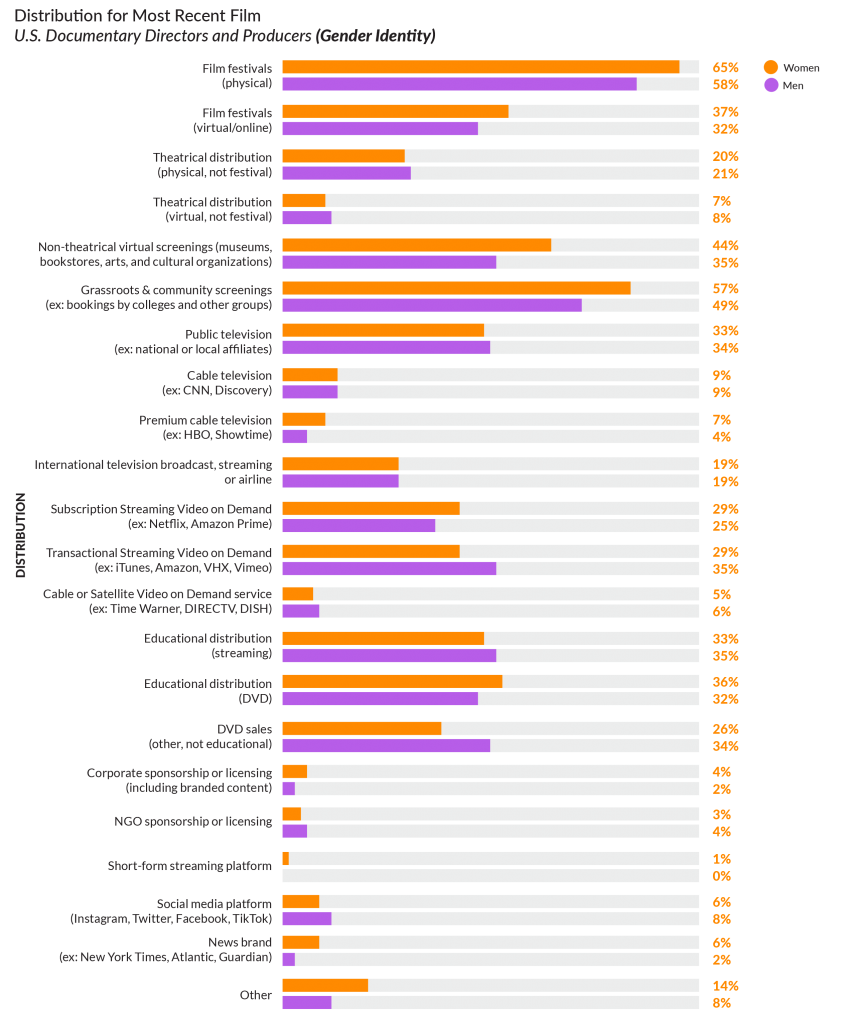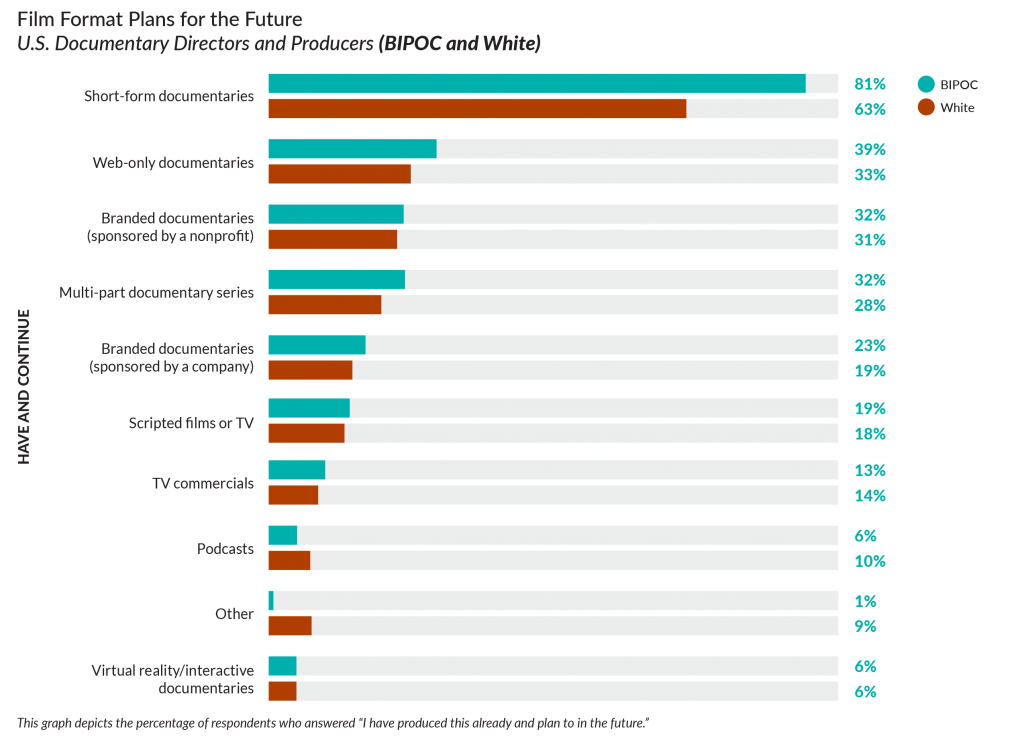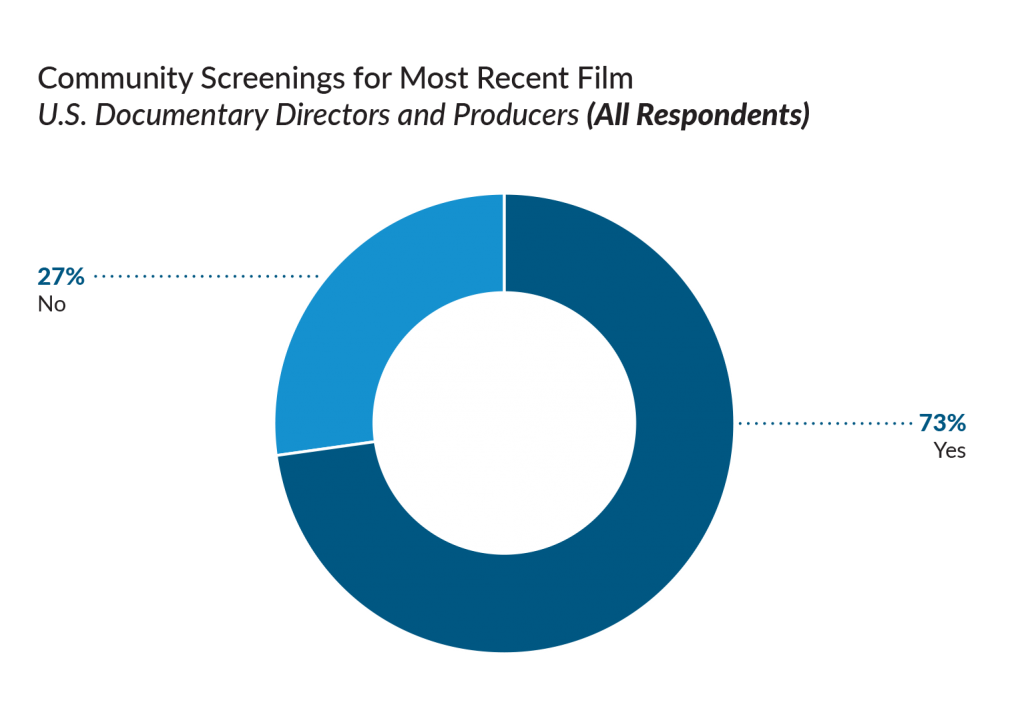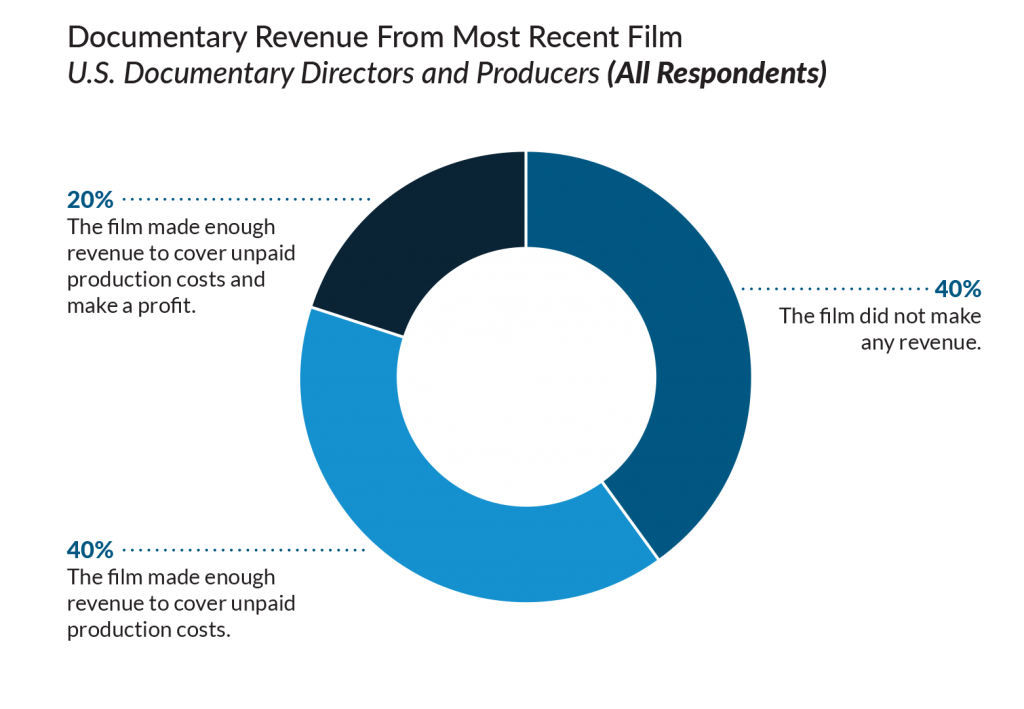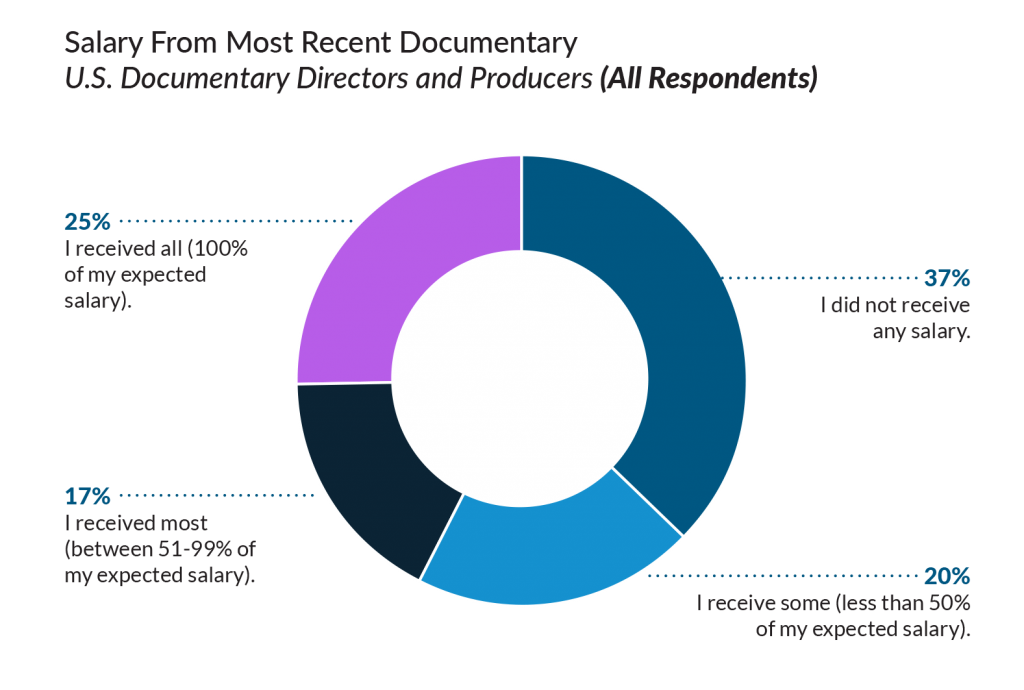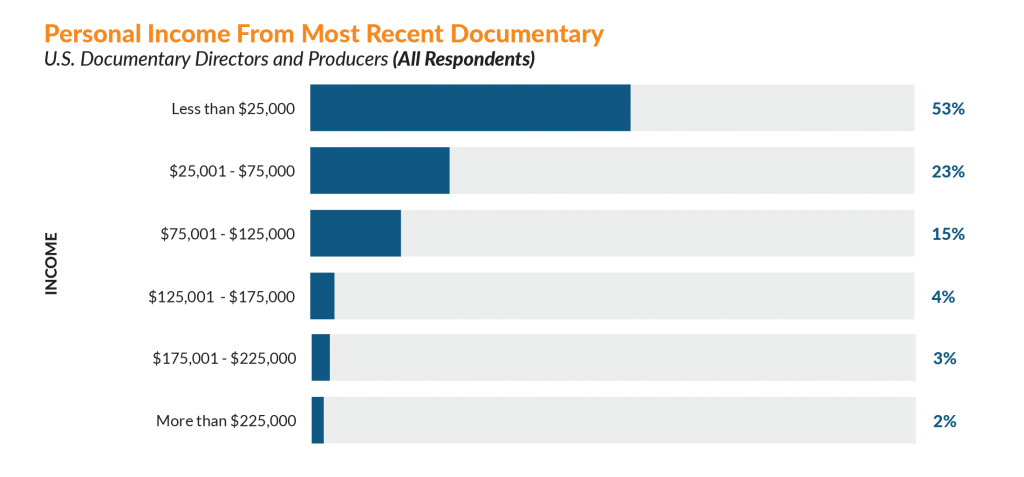What are main sources of documentary revenue for directors and producers?
For their most recent film, the top five main sources of documentary revenue for nonfiction directors and producers are: subscription streaming video on demand (EX: Netflix, Hulu), education distribution (DVDs), educational distribution (streaming), public TV, and DVD sales (not including educational distribution).
The distinctive patterns for BIPOC filmmakers in terms of revenue from their most recent film are severe: BIPOC filmmakers are dramatically less likely to have received revenue from any streaming networks: subscription streaming video on demand (ex: Netflix, Hulu), and transactional streaming on demand (ex: iTunes). They were similarly less likely to report cable TV networks as a main source of documentary revenue for themselves. Public TV and physical theatrical distibution were their top “main” sources of documentary revenue for their most recent film.
Women makers report lower levels of main documentary revenue nearly across the board, and women are also much less likely than men – like BIPOC makers – to report main sources of revenue from streaming services (subscription or transactional streaming networks).
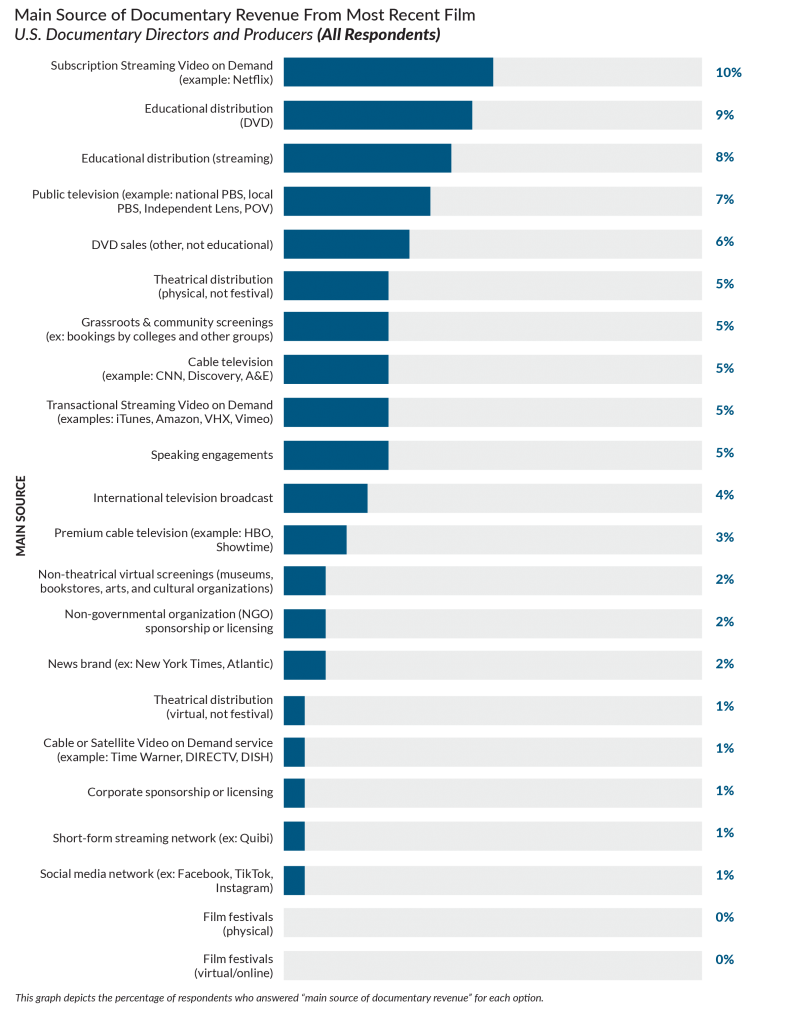
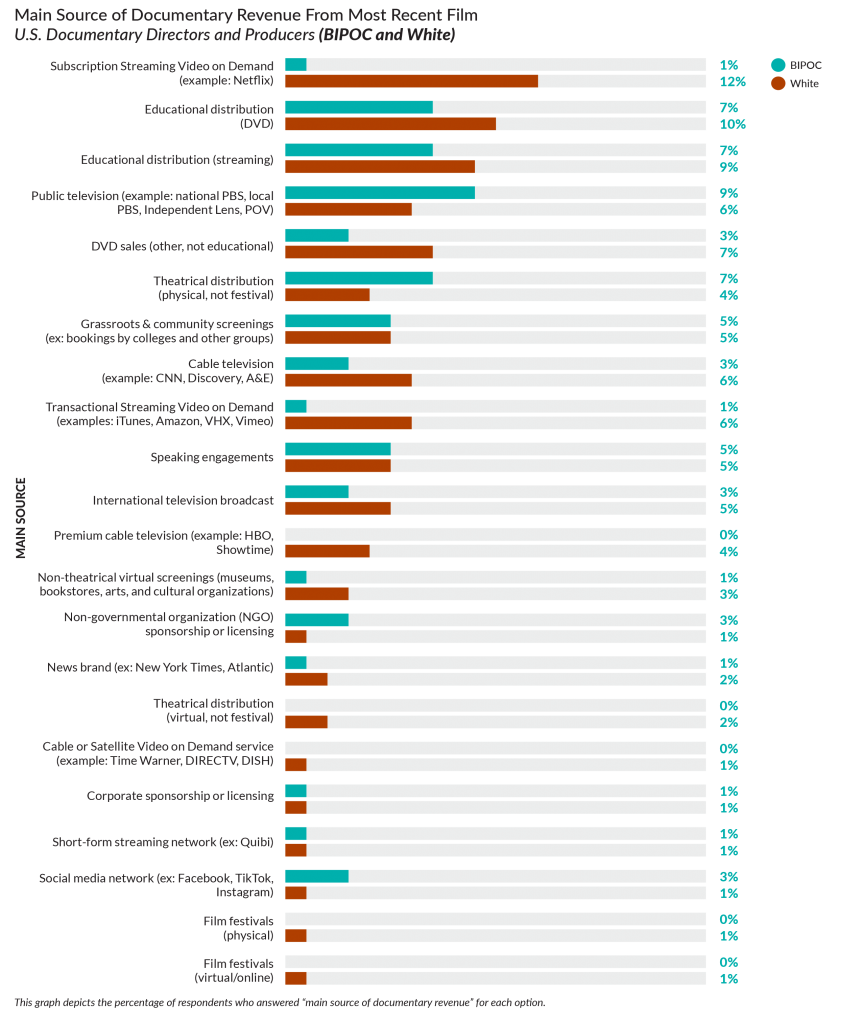


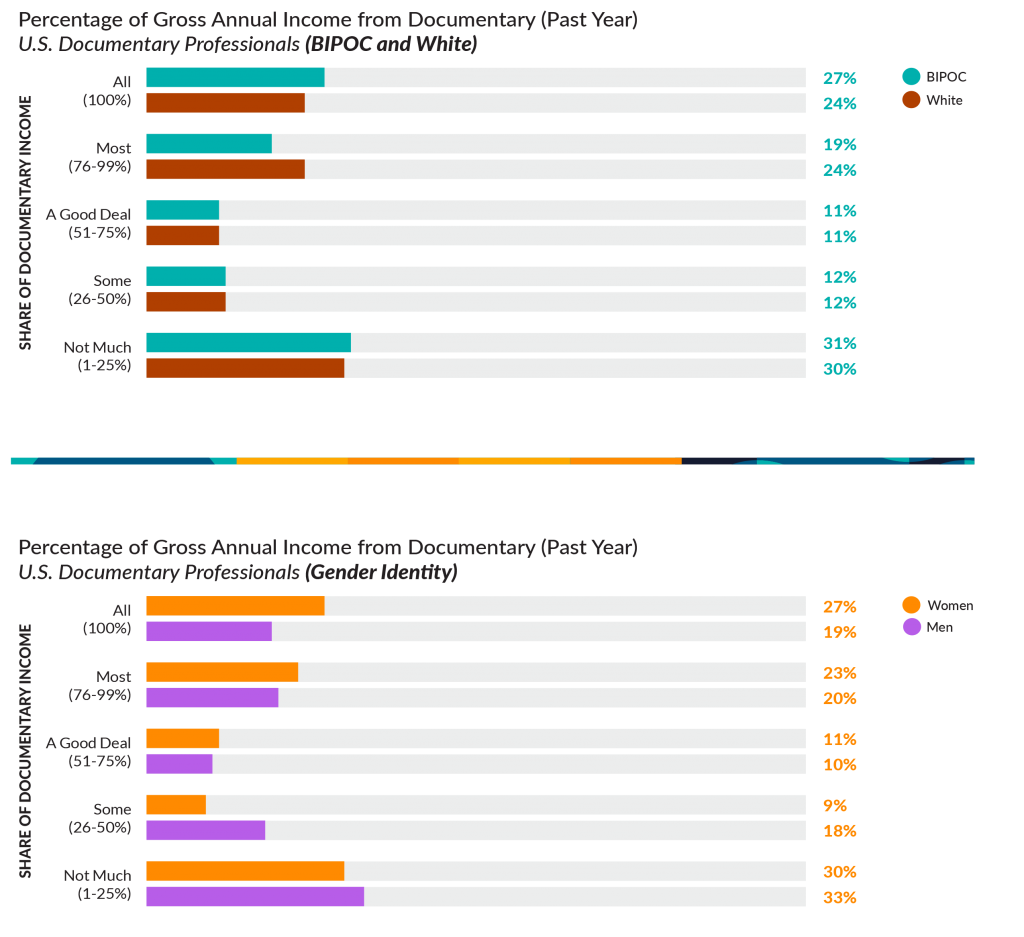

 The Center for Media & Social Impact (CMSI), based at American University’s School of Communication, is a creative innovation lab and research center that creates, studies, and showcases media for equity, social change, and social justice. Focusing on independent, documentary, and entertainment media, the Center bridges boundaries between scholars, producers and communication practitioners across media industries, social justice, public policy, and public engagement. The Center produces resources for the field and academic research; creates original media; convenes conferences and events; and works collaboratively to understand and design media that matter.
The Center for Media & Social Impact (CMSI), based at American University’s School of Communication, is a creative innovation lab and research center that creates, studies, and showcases media for equity, social change, and social justice. Focusing on independent, documentary, and entertainment media, the Center bridges boundaries between scholars, producers and communication practitioners across media industries, social justice, public policy, and public engagement. The Center produces resources for the field and academic research; creates original media; convenes conferences and events; and works collaboratively to understand and design media that matter. The International Documentary Association (IDA) supports the vital work of documentary storytellers and champions a thriving and inclusive documentary culture. IDA provides production funding and fiscal sponsorship to filmmakers, advocates for the rights of documentary makers around the world, publishes Documentary magazine, and produces year-round programming including Getting Real, the largest professional conference in the U.S. for documentary makers.
The International Documentary Association (IDA) supports the vital work of documentary storytellers and champions a thriving and inclusive documentary culture. IDA provides production funding and fiscal sponsorship to filmmakers, advocates for the rights of documentary makers around the world, publishes Documentary magazine, and produces year-round programming including Getting Real, the largest professional conference in the U.S. for documentary makers. 
